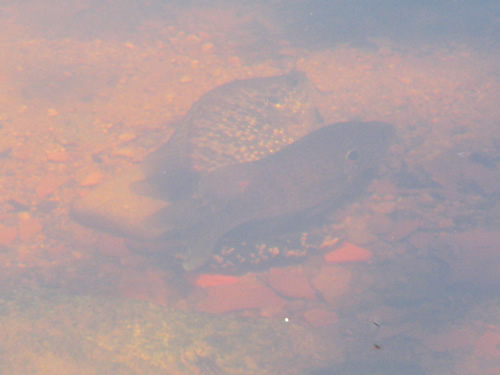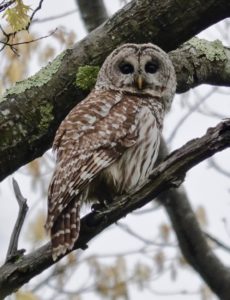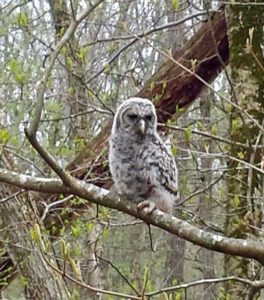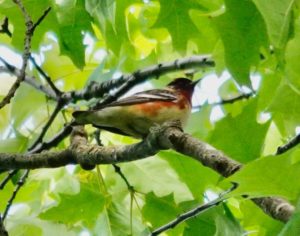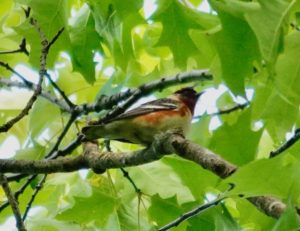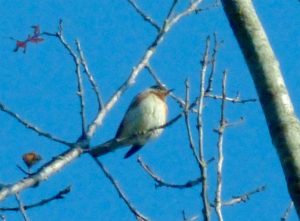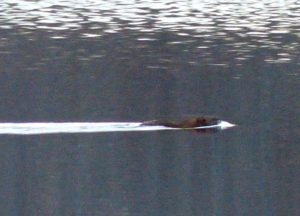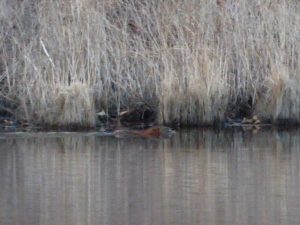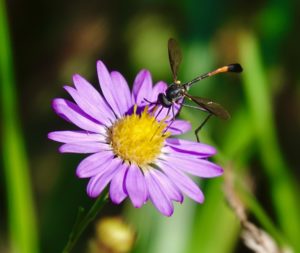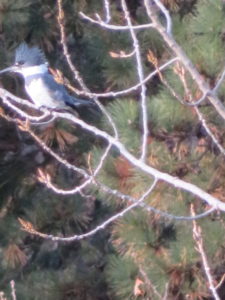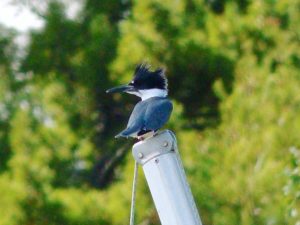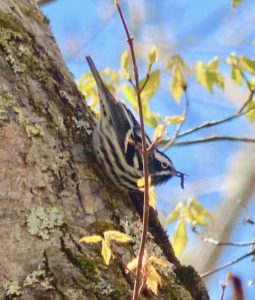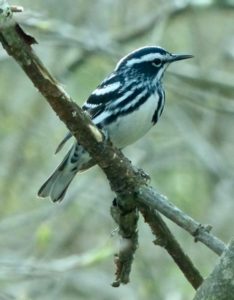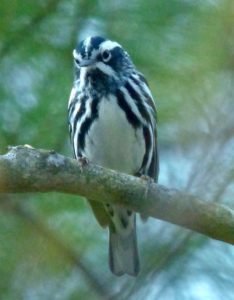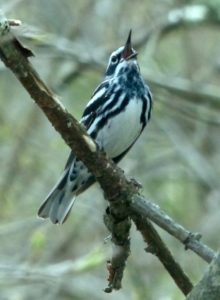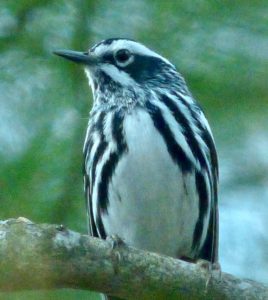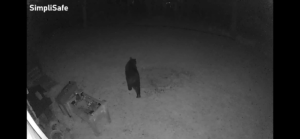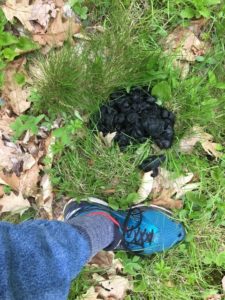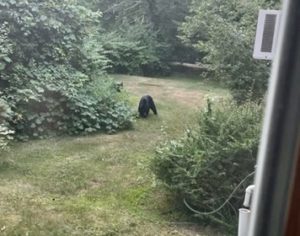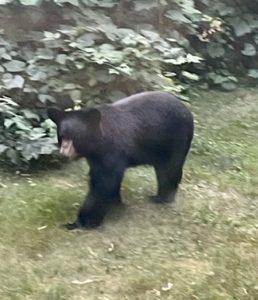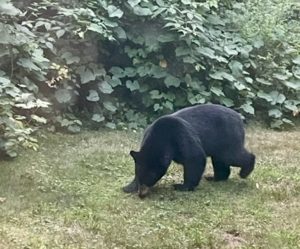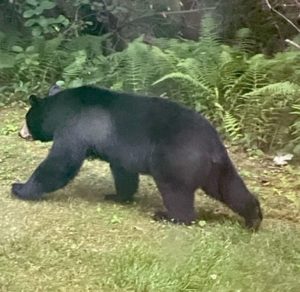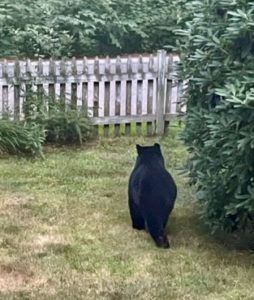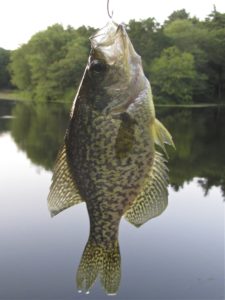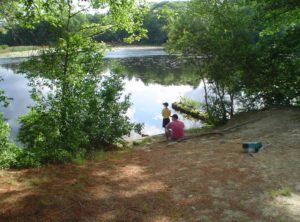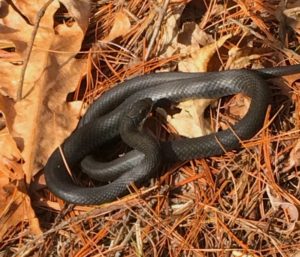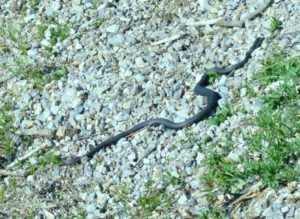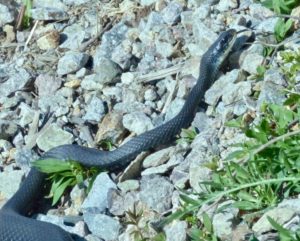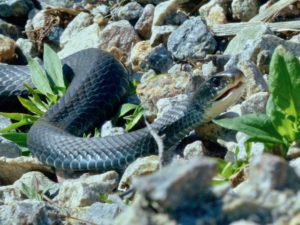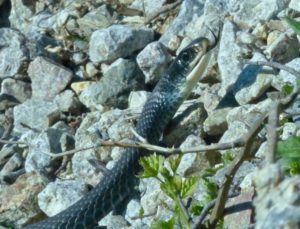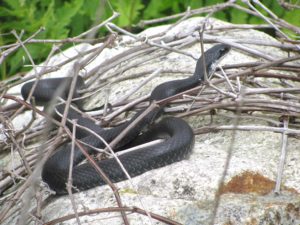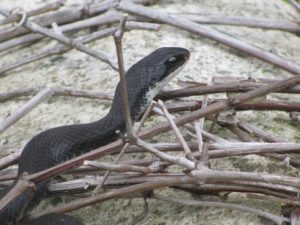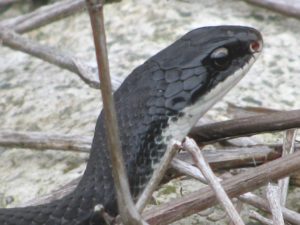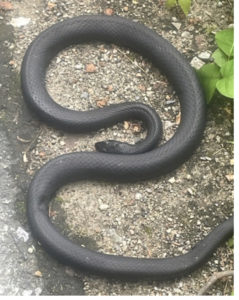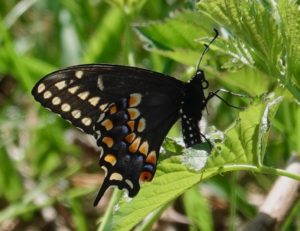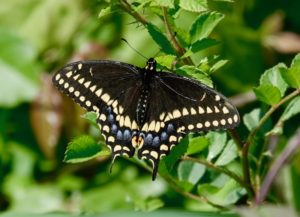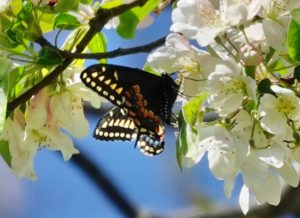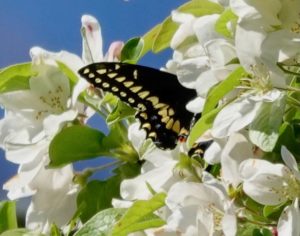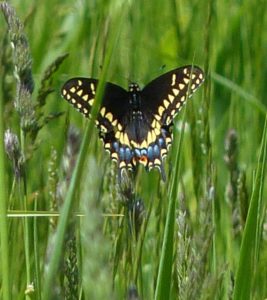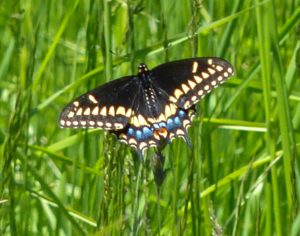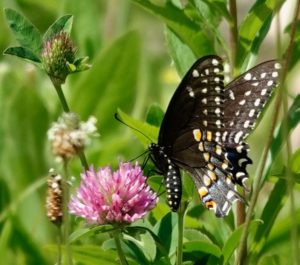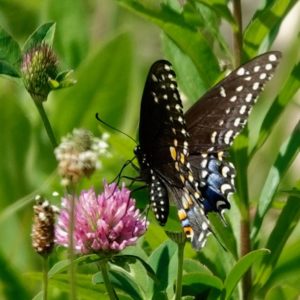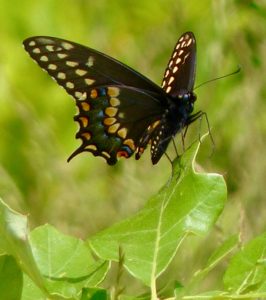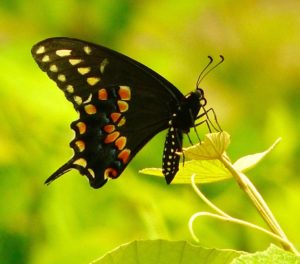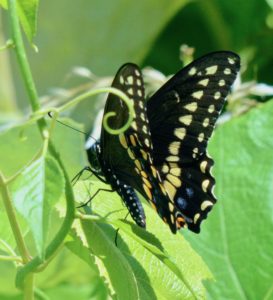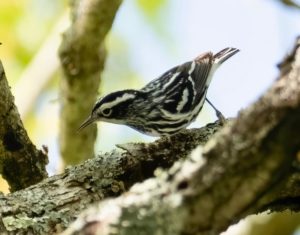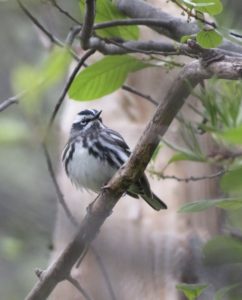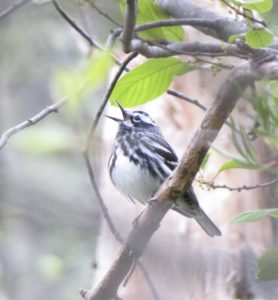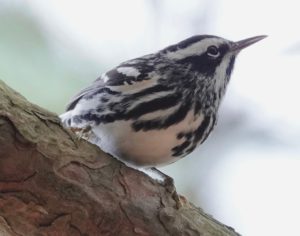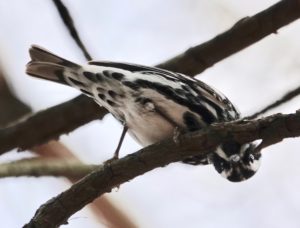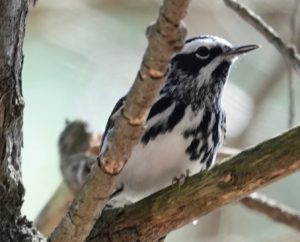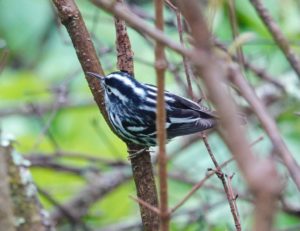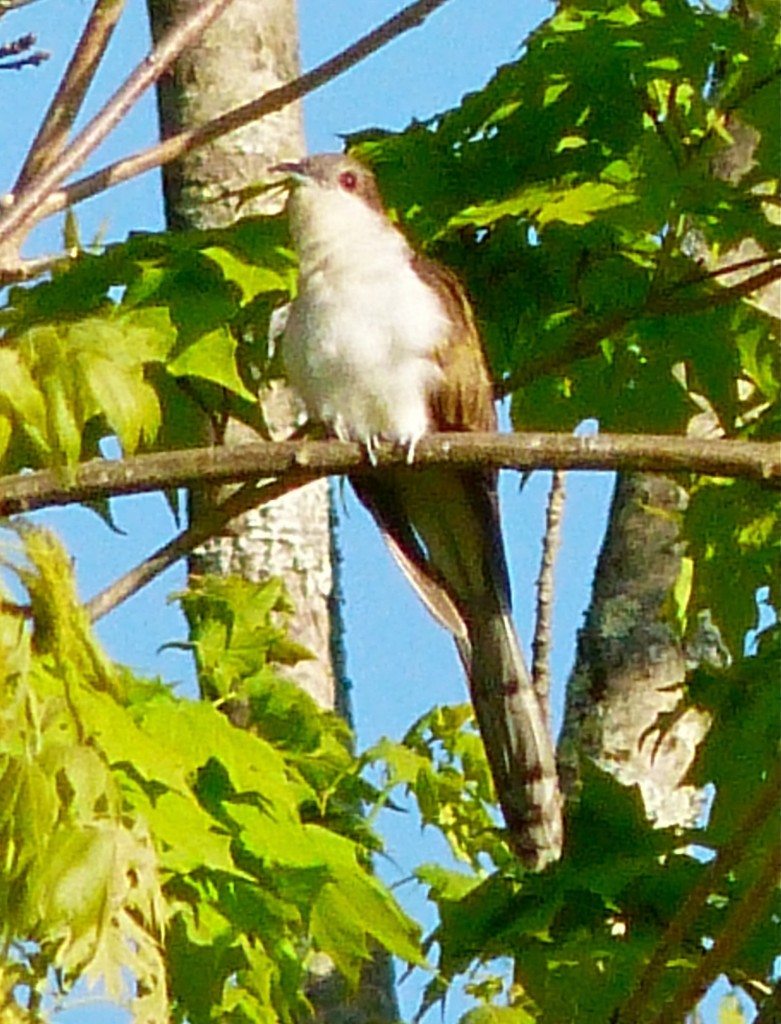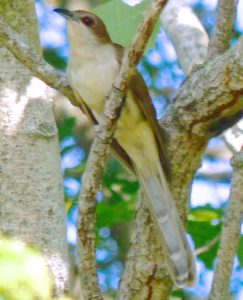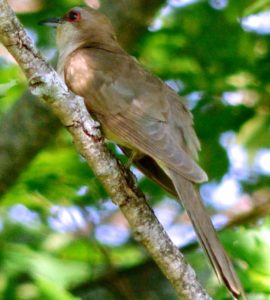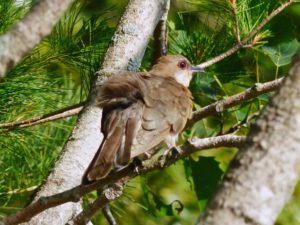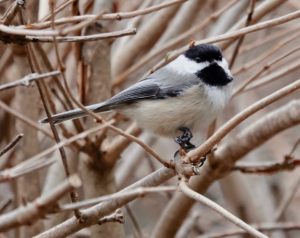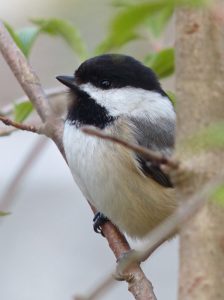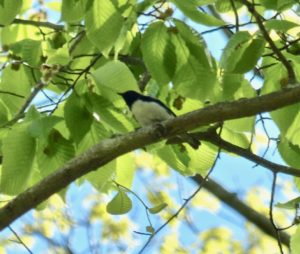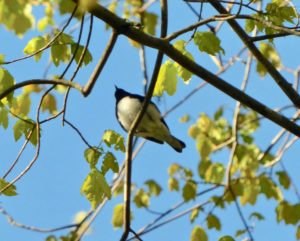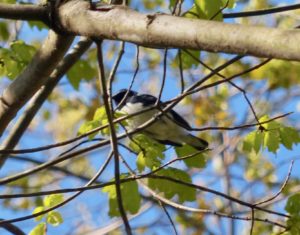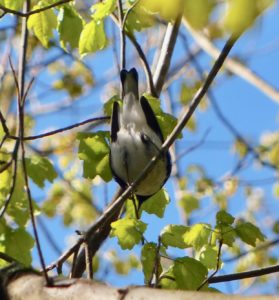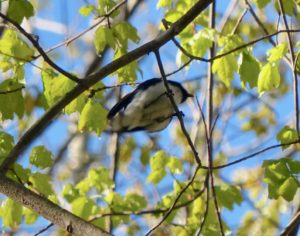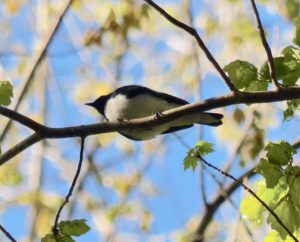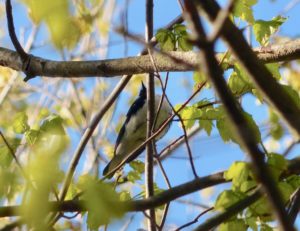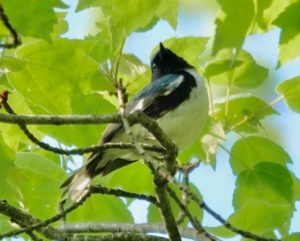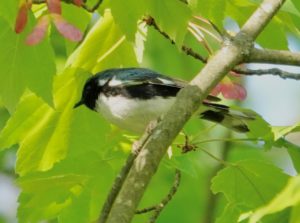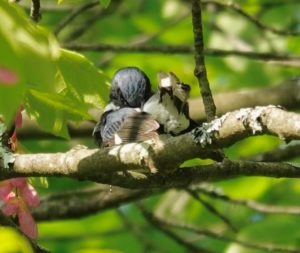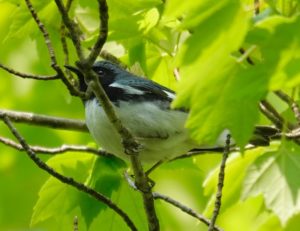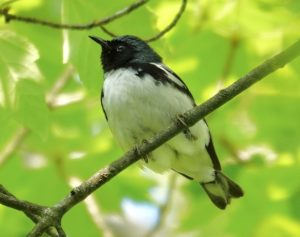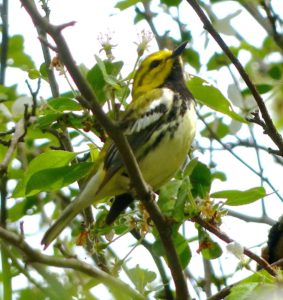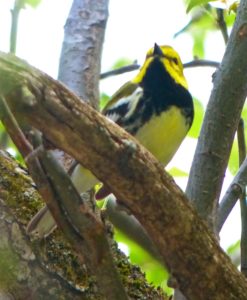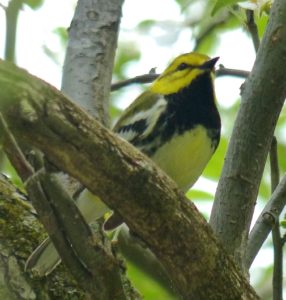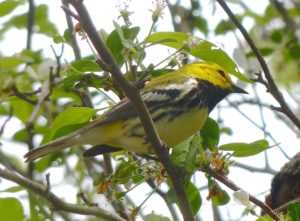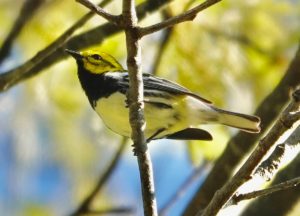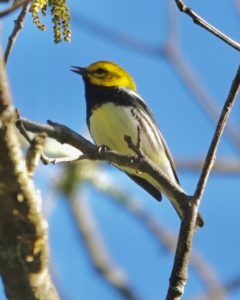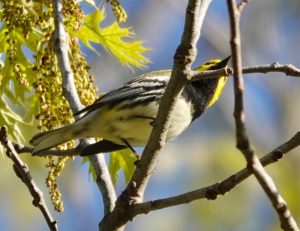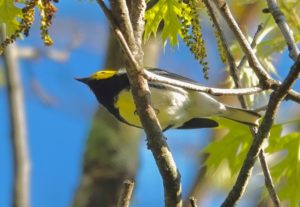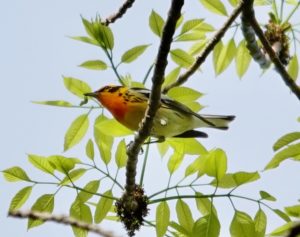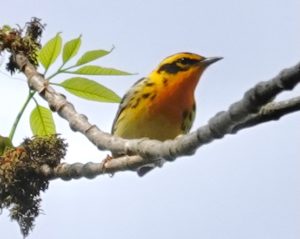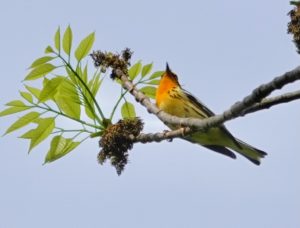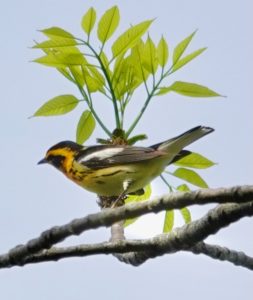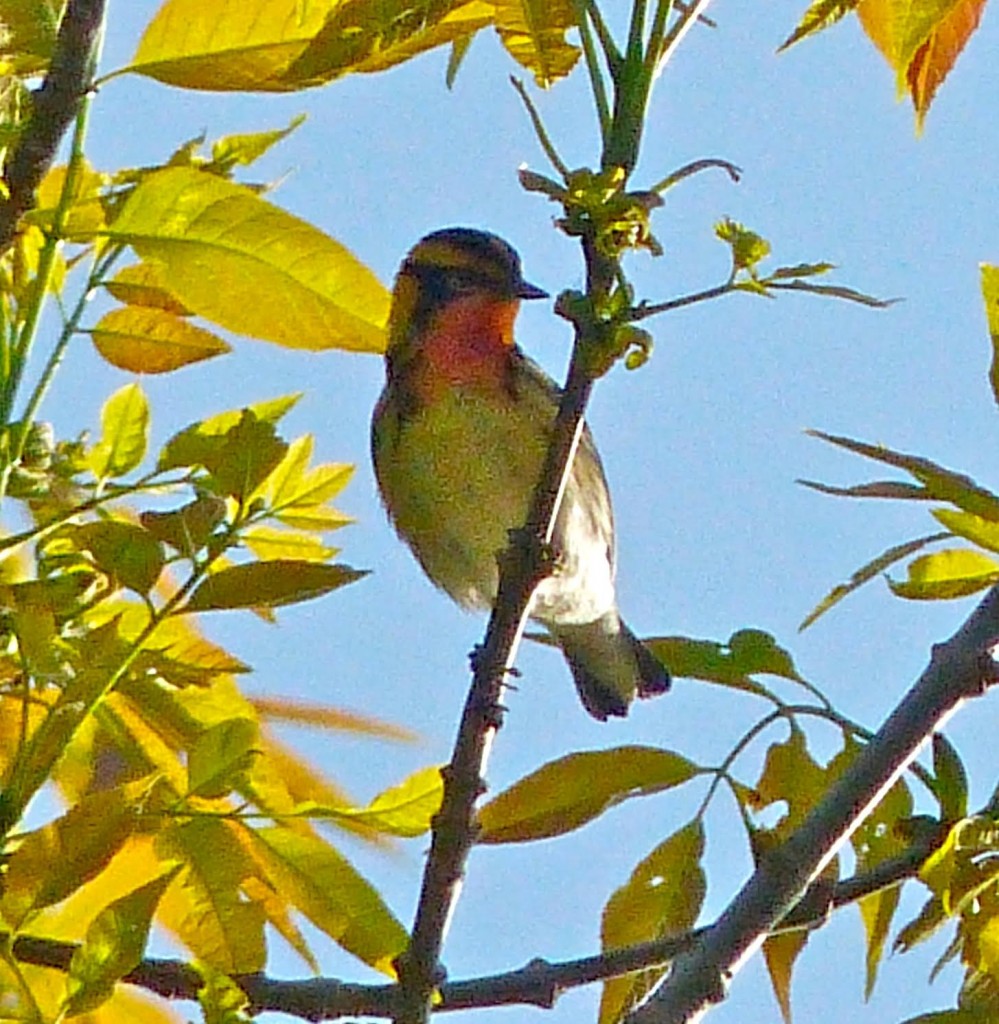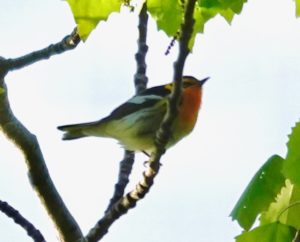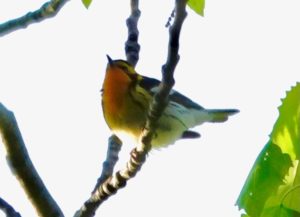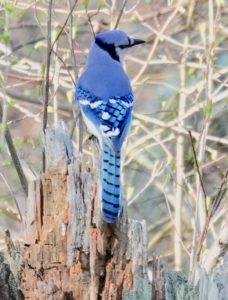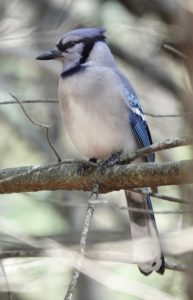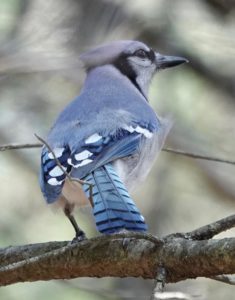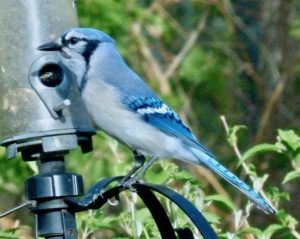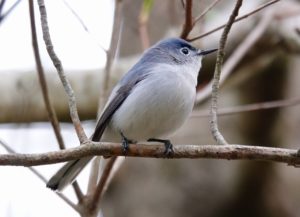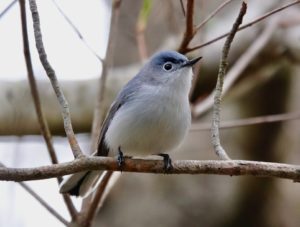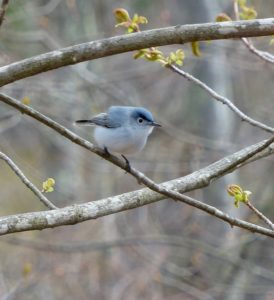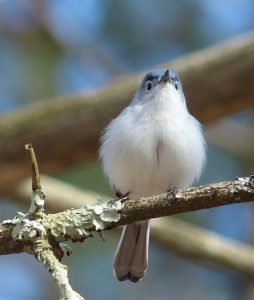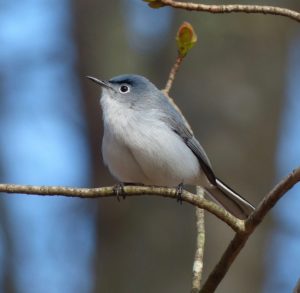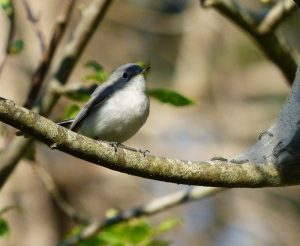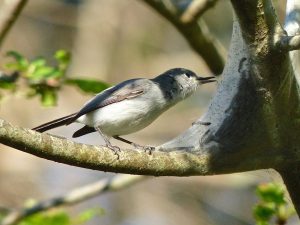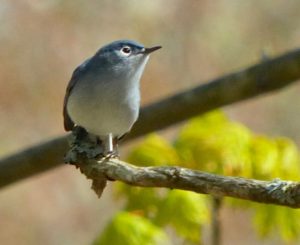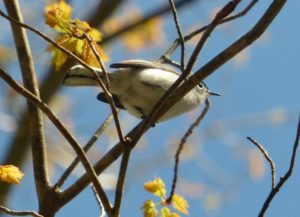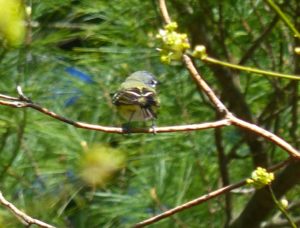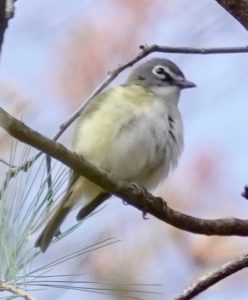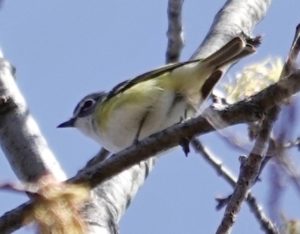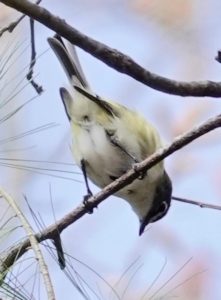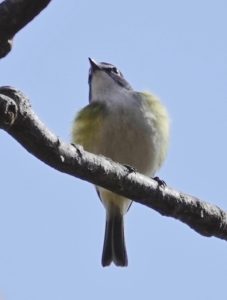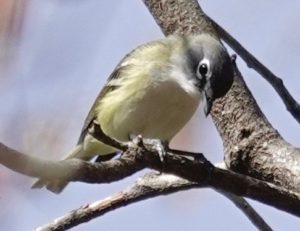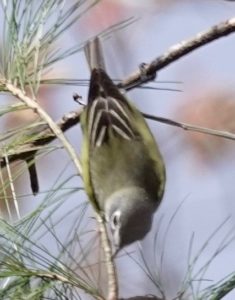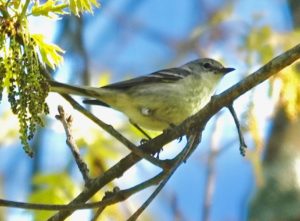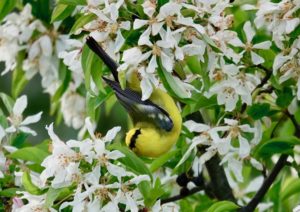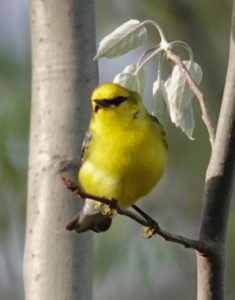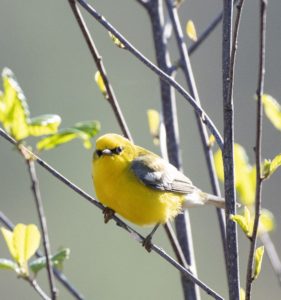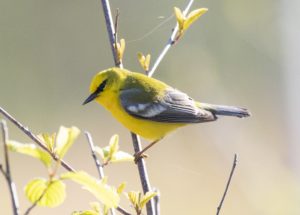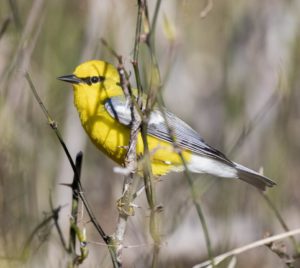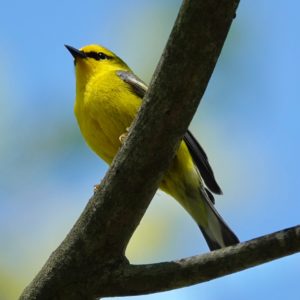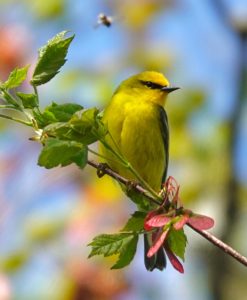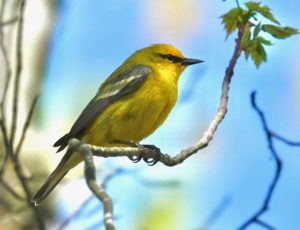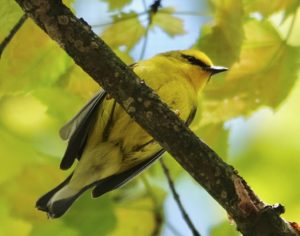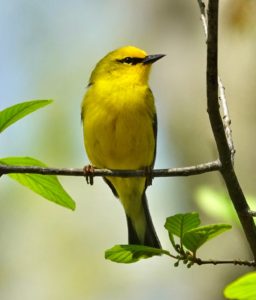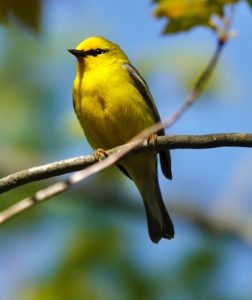Sightings – Animals
Observer: Paul Lauenstein
Observation Date: 5/15/20
Observation Time: 7:45 a.m.
Observation Location: conservation land near Lakeview & Morse
Common Name: Barred Owl
Scientific Name: Strix varia
Comments: A common owl in Sharon, the barred owl’s vocalization sounds like, “Who cooks for you? Who cooks for you all?”
Barred Owls don’t migrate, and they don’t even move around very much. Of 158 birds that were banded and then found later, none had moved farther than 6 miles away.
More Information: All About Birds
Observer: Marshall Katler
Observation Date: 5/24/22
Observation Time: 9:00 a.m.
Observation Location: King Phillip Trail near King Phillip Rd.
Common Name: Barred Owl
Scientific Name: Strix varia
Comments: At least 2 barred owls were calling, possibly 3. They were identified by the call since they were quite far from the trail.
More Information: All About Birds
Observer: Nancy Mollitor
Observation Date: 5/8/16
Observation Time: morning
Observation Location: Moose Hill Audubon Wildlife Sanctuary
Common Name: Barred Owl (juvenile)
Scientific Name: Strix varia
Comments: A common owl in Sharon, the barred owl’s vocalization sounds like, “Who cooks for you? Who cooks for you all?”
Barred Owls don’t migrate, and they don’t even move around very much. Of 158 birds that were banded and then found later, none had moved farther than 6 miles away.
More Information: All About Birds
Observer: Paul Lauenstein
Observation Date: 5/23/23
Observation Time: 6:20 a.m.
Observation Location: Moose Hill Audubon Wildlife Sanctuary
Common Name: Bay-breasted Warbler
Scientific Name: Setophaga castanea
Comments: Bay-breasted warblers migrate through Sharon in May en route to their summertime breeding areas in Canada. They eat insects and spiders to keep up their energy during the long flight.
Even for experienced bird watchers, bay-breasted warblers are an unusual find. They are typically seen high up in tall trees, making good photos of them especially challenging. Populations of bay-breasted warbler appear to be decreasing throughout their range. The U.S. has seen a decline of almost 3% per year between 1966 and 2014, resulting in a cumulative decline of 74%, according to the North American Breeding Bird Survey.
More Information: All About Birds and American Bird Conservancy
Observer: Paul Lauenstein
Observation Date: 5/24/18
Observation Time: 6:30 a.m.
Observation Location: Moose Hill Audubon Wildlife Sanctuary
Common Name: Bay-breasted Warbler
Scientific Name: Setophaga castanea
Comments: Bay-breasted warblers migrate through Sharon in May en route to their summertime breeding areas in Canada. They eat insects and spiders to keep up their energy during the long flight.
Even for experienced bird watchers, bay-breasted warblers are an unusual find. They are typically seen high up in tall trees, making good photos of them especially challenging. Populations of bay-breasted warbler appear to be decreasing throughout their range. The U.S. has seen a decline of almost 3% per year between 1966 and 2014, resulting in a cumulative decline of 74%, according to the North American Breeding Bird Survey.
More Information: All About Birds and American Bird Conservancy
Observer: Paul Lauenstein
Observation Date: 4/20/14
Observation Time: 7:15 p.m.
Observation Location: Gavins Pond
Common Name: Beaver
Scientific Name: Castor canadensis
Comments: Beavers are the second-largest living rodents, after capybaras, weighing up to 50 kg (110 lb). They build dams to form ponds in which they then build a lodge to protect themselves from predators.
More Information: Wikipedia
Observer: Paul Lauenstein
Observation Date: 9/4/20
Observation Time: 2:15 p.m.
Observation Location: Moose Hill Farm (TTOR)
Common Name: Bee fly
Scientific Name: Systropus macer
Comments: This fly looks like a wasp. It was feeding on a late purple aster blossom beside the dirt road under the power lines.
More Information: Forestry Images and Bugguide.net
Observer: Deborah Radovsky
Observation Date: 11/24/18
Observation Time: 8:30 a.m.
Observation Location: in a tree at the edge of Lake Massapoag, near Beach St.
Common Name: Belted Kingfisher
Scientific Name: Megaceryle alcyon
Comments: Kingfishers have also been sighted near the boat launch area and in the Gavins Pond area. They dive for small fish. They nest in burrows.
More Information: All About Birds
Observer: Paul Lauenstein
Observation Date: 8/3/10
Observation Time: 9:30 a.m.
Observation Location: Gavins Pond
Common Name: Belted Kingfisher
Scientific Name: Megaceryle alcyon
Comments: A pair of belted kingfishers were diving simultaneously several times into Gavins Pond. The bottom photo shows the splash of the kingfisher diving in.
Kingfishers nest in burrows on the banks of ponds and rivers.
More Information: University of Massachusetts


Observer: Paul Lauenstein
Observation Date: 9/18/14
Observation Time: 2:50 p.m.
Observation Place: near Lake Massapoag boat launching ramp
Common Name: Belted Kingfisher
Scientific Name: Megaceryle alcyon
Comments: Belted kingfishers nest in a burrow, usually in a dirt bank near water. Their call is a distinctive, scolding chatter. Check out the recordings at the link below.
More Information: All About Birds
Observer: Paul Lauenstein
Observation Date: 9/9/13
Observation Time: 2:05 p.m.
Observation Location: Gavins Pond Dam
Common Name: Belted Kingfisher
Scientific Name: Megaceryle alcyon
Comments: These charismatic birds dive for fish. Believe it or not, they nest in burrows on the banks of streams and ponds.
More Information: University of Massachusetts
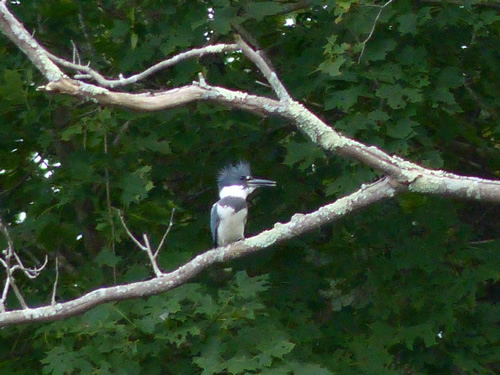
Observer: Paul Lauenstein
Observation Date: 11/12/12
Observation Time: 5:30 p.m.
Observation Location: Gavins Pond Dam
Common Name: Big Brown Bat
Scientific Name: Eptesicus fuscus
Comments: New England has little brown bats and big brown bats. Little brown bats are only found in New England in summer. Since these bats were observed in mid-November, they are presumably big brown bats. Bats fly fast, so getting these photos was not easy!
More Information: Mass Audubon
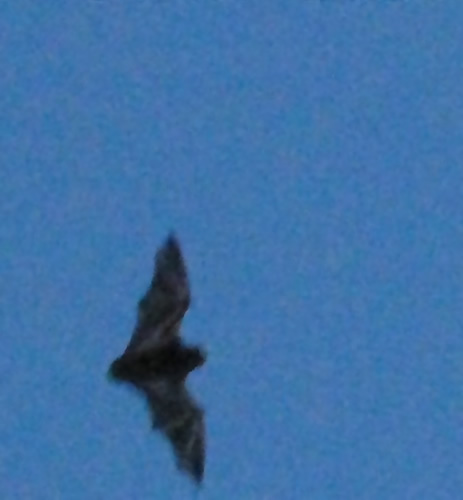
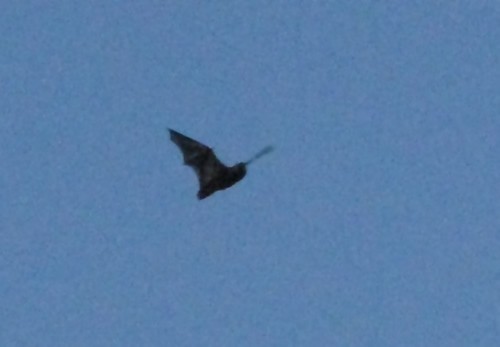
Observer: Paul Lauenstein
Observation Date: 5/11/19
Observation Time: 10:30 a.m.
Observation Location: Moose Hill Audubon Wildlife Sanctuary
Common Name: Black-and-white Warbler
Scientific Name: Mniotilta varia
Comments: Black and white warblers make a high-pitched squeaking sound like a turning wheel that needs to be oiled. They are most often found scurrying up and down tree trunks and branches looking under the bark for insect larvae. The one in the photo has caught its breakfast.
More Information: All About Birds
Observer: Paul Lauenstein
Observation Date: 5/13/14
Observation Time: 7:35 a.m.
Observation Location: Moose Hill Audubon Wildlife Sanctuary
Common Name: Black and White Warbler
Scientific Name: Mniotilta varia
Comments: Black and white warblers are usually seen moving up and down tree trunks looking for bugs under the bark.
More Information: All About Birds
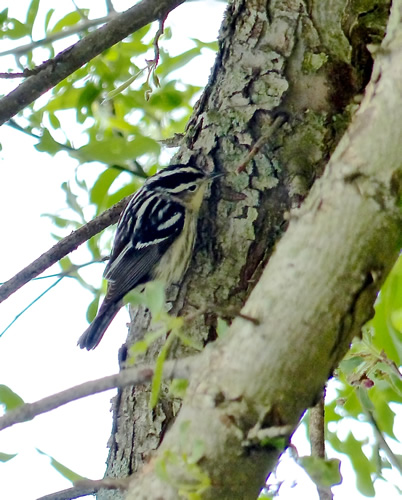
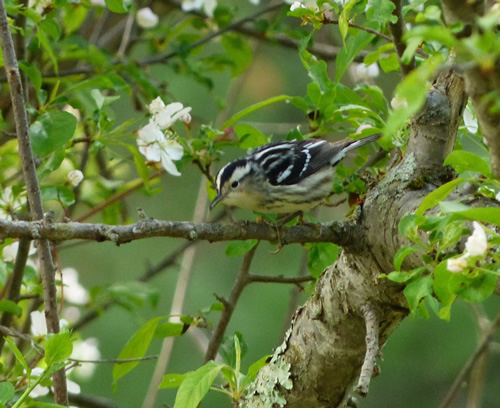
Observer: Paul Lauenstein
Observation Date: 5/3/18
Observation Time: 8:40 a.m.
Observation Location: Moose Hill Audubon Wildlife Sanctuary
Common Name: Black and White Warbler
Scientific Name: Mniotilta varia
Comments: Black and white warblers are usually seen moving up and down tree trunks looking for bugs under the bark.
More Information: All About Birds
Observer: Paul Lauenstein
Observation Date: 5/16/13
Observation Time: 7:30 a.m.
Observation Location: Moose Hill Audubon Wildlife Sanctuary
Common Name: Black and White Warbler (female)
Scientific Name: Mniotilta varia
Comments: Black and white warblers creep along tree trunks and branches foraging for insects. Their high-pitched squeaky song sounds like a wheel turning that needs to be oiled.
More Information: https://www.allaboutbirds.org/guide/Black-and-white_Warbler/overview
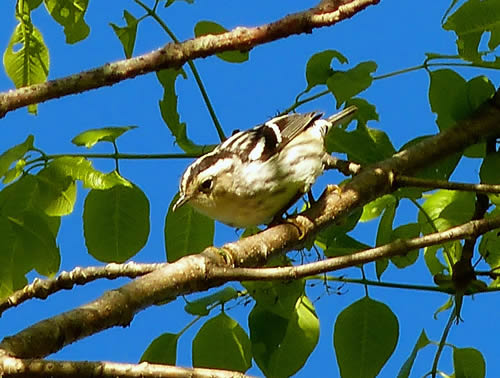
Observer: Regen Jamieson
Observation Date: 8/11/09
Observation Location: Moose Hill in the meadow at the end of the “unnatural trail”.
Common Name: Black and Yellow Garden Spider
Scientific Name: Argiope aurantia
Comments: Males range from 5 to 9 mm; females from 19 to 28 mm. Like other members of Argiope they are considered harmless to humans.The female of the species grows much larger than the male. Females have large rounded bodies that may grow to 40 mm (1 1/2 inches), excluding the legs. If the length of the legs is added, the female can reach 75 mm (3″) in diameter. Males are thin-bodied and only 20 mm (¾”) long. Garden Spiders often build webs in areas adjacent to open sunny fields where they stay concealed and protected from the wind. The spider can also be found along the eaves of houses and outbuildings or in any tall vegetation where they can securely stretch a web. The circular part of the female’s web may reach two feet in diameter. Webs are built at elevations from two to eight feet off the ground. Female Argiope aurantia spiders tend to be somewhat local, often staying in one place throughout much of their lifetime. After mating, the male dies, and is sometimes then eaten by the female. She lays her eggs at night on a sheet of silky material, then covers them with another layer of silk, then a protective brownish silk. She then uses her legs to form the sheet into a ball with an upturned neck. Egg sacs range from 5/8″ to 1″ in diameter. She often suspends the egg sac right on her web, near the center where she spends most of her time. Each spider produces from one to four sacs with perhaps over a thousand eggs inside each. She guards the eggs against predation as long as she is able. However, as the weather cools, she becomes more frail, and dies around the time of the first hard frost. (from Wikipedia)
More Information: Animal Diversity Web
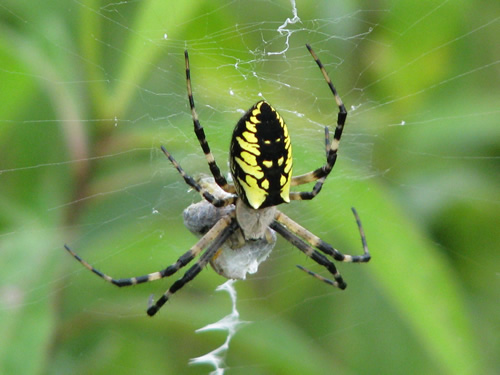
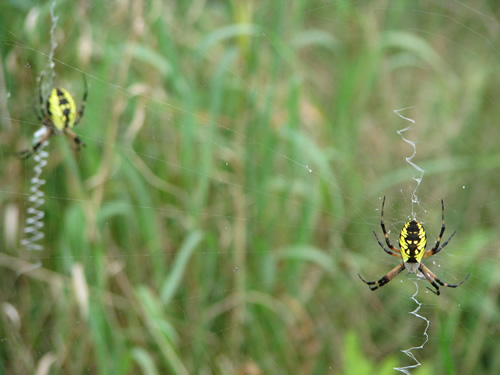
Observer: April Forsman
Observation Date: 9/24/10
Observation Time: 10:15 a.m.
Observation Location: DPW
Common Name: Black and Yellow Garden Spider
Scientific Name: Argiope aurantia
Comments: Males range from 5 to 9 mm; females from 19 to 28 mm. Like other members of Argiope they are considered harmless to humans.The female of the species grows much larger than the male. Females have large rounded bodies that may grow to 40 mm (1 1/2 inches), excluding the legs. If the length of the legs is added, the female can reach 75 mm (3″) in diameter. Males are thin-bodied and only 20 mm (¾”) long. Garden Spiders often build webs in areas adjacent to open sunny fields where they stay concealed and protected from the wind. The spider can also be found along the eaves of houses and outbuildings or in any tall vegetation where they can securely stretch a web. The circular part of the female’s web may reach two feet in diameter. Webs are built at elevations from two to eight feet off the ground. Female Argiope aurantia spiders tend to be somewhat local, often staying in one place throughout much of their lifetime. After mating, the male dies, and is sometimes then eaten by the female. She lays her eggs at night on a sheet of silky material, then covers them with another layer of silk, then a protective brownish silk. She then uses her legs to form the sheet into a ball with an upturned neck. Egg sacs range from 5/8″ to 1″ in diameter. She often suspends the egg sac right on her web, near the center where she spends most of her time. Each spider produces from one to four sacs with perhaps over a thousand eggs inside each. She guards the eggs against predation as long as she is able. However, as the weather cools, she becomes more frail, and dies around the time of the first hard frost. (from Wikipedia)
More Information: Animal Diversity Web
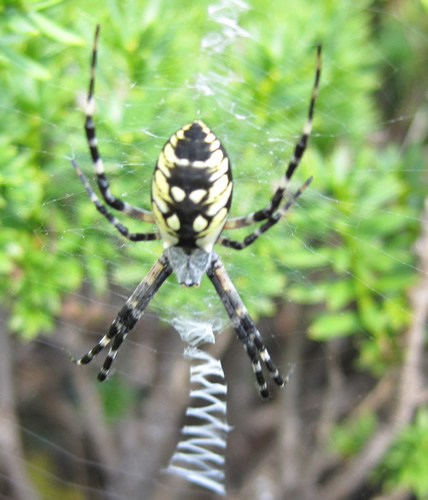
Observer: Rob
Observation Date: 4/17/24
Observation Time: 11:35 pm
Observation Location: back yard on Norwood Street
Common Name: American Black Bear
Scientific Name: Ursus Americanus
Comments: Black bears are hungry when they emerge from hibernation in spring, and there is not much to eat in the natural environment. That’s why it is important to secure bird feeders and garbage cans. Interactions between humans and bears often end badly for one or the other or both.
Black bears have better eyesight and hearing than humans. Their keenest sense is their sense of smell, which is about seven times more sensitive than a domestic dog’s.
More Information: Wikipedia
Observer: Kurt Buermann
Observation Date: 5/6/23
Observation Time: nighttime
Observation Location: 45 Furnace St.
Common Name: American Black Bear
Scientific Name: Ursus Americanus
Comments: A young black bear raided Kurt’s cache of bird seed. Kurt used a camera trap to get this video of the bear wandering around his house.
More Information: Wikipedia
Observer: Richard Mandel
Observation Date: 6/24/23
Observation Time: at night
Observation Location: Mountain Street
Common Name: American Black Bear
Scientific Name: Ursus Americanus
Comments: This black bear destroyed two bird feeders at our house during the night of June 24, 2023, and devoured the contents of the feeders. In addition it left some droppings.
American black bears have better eyesight and hearing than humans. Their keenest sense is their sense of smell, which is about seven times more sensitive than a domestic dog’s.
American black bears tend to be territorial and non-gregarious in nature. Bear sightings in Sharon are rare. This young bear might have been passing through Sharon seeking a territory of its own.
More Information: Wikipedia
Black Bear video June 24, 2023
bear droppings:
Observer: Emily Smith-Lee
Observation Date: 7/30/22
Observation Time: 3:00 pm
Observation Location: 33 Moose Hill Parkway
Common Name: American Black Bear
Scientific Name: Ursus Americanus
Comments: He came out of the woods behind our house (town owned conservation land between Moose Hill Parkway and Upland Road) and walked across our back yard before going back into the woods where our yard meets a little creek.
According to Wikipedia, “In the northeastern part of the range (the United States and Canada), prime habitat consists of a forest canopy of hardwoods such as beech, maple, birch and coniferous species. Corn crops and oak-hickory mast are also common sources of food in some sections of the Northeast; small, thick swampy areas provide excellent refuge cover largely in stands of white cedar.” Sharon’s 250-acre cedar swamp fits this description.
American black bears have better eyesight and hearing than humans. Their keenest sense is their sense of smell, which is about seven times more sensitive than a domestic dog’s.
American black bears tend to be territorial and non-gregarious in nature. Bear sightings in Sharon are extremely rare. This bear might have been passing through Sharon seeking a territory of its own.
More Information: Wikipedia
Observer: Paul Lauenstein
Observation Date: 8/5/11
Observation Time: 6:40 p.m.
Observation Location: Gavins Pond
Common Name: Black Crappie (Calico Bass)
Scientific Name: Pomoxis nigromaculatus
Comments: Crappies are a popular sport fish, as they are easy to catch when they are feeding. As with other freshwater species in Massachusetts, crappies accumulate mercury in their tissues as a result of environmental pollution from power plants.
More Information: All About Fishing
Observer: Marcia Tranavitch
Observation Date: 1/11/20
Observation Time: mid-day
Observation Location: on top of Pierce’s Hill on the Warner Trail (which is also the Bay Circuit Trail at this point)
Common Name: Black racer
Scientific Name: Coluber constrictor
Comments: Reptiles are cold-blooded so they warm themselves by basking. This black racer was seen sunning itself on a warm winter day. It didn’t stretch out for me but I would estimate it was about 2 feet long. This must be a young one because lack racers can reach 5 feet in length.
Although they are not venemous, black racers are fast (hence their name) and can be aggressive toward humans.
More Information: Snakes of Massachusetts
Observer: Paul Lauenstein
Observation Date: 5/7/18
Observation Time: 8:15 a.m.
Observation Location: Moose Hill Audubon Wildlife Sanctuary
Common Name: Black racer
Scientific Name: Coluber constrictor
Comments: This black racer was sunning itself in the cool of the morning, and continuously monitoring its surroundings by “tasting” the air with its forked tongue.
More Information: Snakes of Massachusetts
Observer: Paul Lauenstein
Observation Date: 6/14/09
Observation Time: morning
Observation Location: Moose Hill Farm, Trustees of Reservations land
Common Name: Black Racer
Scientific Name: Coluber constrictor
Comments: Photos taken on Sunday, 6/14/09 at SFOC’s Biodiversity Day event at Trustees of Reservations on Moose Hill.
More Information: UMass Amherst Natural Resources & Environmental Conservation
Observer: Bruce Lewis
Observation Date: 8/10/23
Observation Time: 4:00 pm
Observation Location: Near the intersection of Moose Hill st and Walpole st. In the section of the woods bordering the street and just outside the field where Wards Berry Farm grows crops.
Common Name: Black Racer
Scientific Name: Coluber constrictor
Comments: Reptiles are cold-blooded so they warm themselves by basking. This black racer was seen sunning itself on a warm winter day. It didn’t stretch out for me but I would estimate it was about 2 feet long. This must be a young one because lack racers can reach 5 feet in length.
Although they are not venemous, black racers are fast (hence their name) and can be aggressive toward humans.
More Information: Snakes of Massachusetts
Observer: Paul Lauenstein
Observation Date: 5/30/20
Observation Time: 2:25 p.m.
Observation Location: Moose Hill Farm (The Trustees of Reservations)
Common Name: Black Swallowtail butterfly
Scientific Name: Papilio polyxenes
Comments: The big pasture at Moose Hill Farm is a good place to find black swallowtail butterflies (and other butterfly species as well). You can sometimes find bobolinks there as well.
Black swallowtail butterflies look a lot like spicebush swallowtail butterflies. You can learn how to tell the difference between a black swallowtail and a spicebush swallowtail at: http://www.naba.org/chapters/nabambc/frames-2species.asp?sp1=Papilio-polyxenes&sp2=Papilio-troilus
There is also a good discussion of how to tell the differences among four black butterfly species at: http://louisiananaturalist.blogspot.com/2009/06/four-dark-swallowtails.html
More Information: Butterflies and Moths of North America
I took this photo the following day in the same location:
Observer: Paul Lauenstein
Observation Date: 5/6/23
Observation Time: 9:45 a.m.
Observation Location: Moose Hill Audubon Wildlife Sanctuary
Common Name: Black Swallowtail butterfly
Scientific Name: Papilio polyxenes
Comments: I was surprised to see this black swallowtail butterfly so early in the season. It was feeding on the blossoms of a flowering tree near the barn on the Billings Loop.
Black swallowtail butterflies look a lot like spicebush swallowtail butterflies. You can learn how to tell the difference between a black swallowtail and a spicebush swallowtail at: http://www.naba.org/chapters/nabambc/frames-2species.asp?sp1=Papilio-polyxenes&sp2=Papilio-troilus
There is also a good discussion of how to tell the differences among four black butterfly species at: http://louisiananaturalist.blogspot.com/2009/06/four-dark-swallowtails.html
More Information: Butterflies and Moths of North America
Observer: Paul Lauenstein
Observation Date: 5/26/19
Observation Time: 12:20 p.m.
Observation Location: Moose Hill Farm (The Trustees of Reservations)
Common Name: Black Swallowtail butterfly
Scientific Name: Papilio polyxenes
Comments: The big meadow at Moose Hill Farm was alive with pairs of black swallowtails chasing each other on this glorious spring day. Black swallowtail butterflies look a lot like spicebush swallowtail butterflies. You can learn how to tell the difference between a black swallowtail and a spicebush swallowtail at: http://www.naba.org/chapters/nabambc/frames-2species.asp?sp1=Papilio-polyxenes&sp2=Papilio-troilus
There is also a good discussion of how to tell the differences among four black butterfly species at: http://louisiananaturalist.blogspot.com/2009/06/four-dark-swallowtails.html
More Information: Butterflies and Moths of North America
Observer: Paul Lauenstein
Observation Date: 5/28/23
Observation Time: 11:10 a.m.
Observation Location: Moose Hill Farm (TTOR)
Common Name: Black Swallowtail butterfly
Scientific Name: Papilio polyxenes
Comments: Black swallowtail butterflies look a lot like spicebush swallowtail butterflies. You can learn how to tell the difference between a black swallowtail and a spicebush swallowtail at: http://www.naba.org/chapters/nabambc/frames-2species.asp?sp1=Papilio-polyxenes&sp2=Papilio-troilus
There is also a good discussion of how to tell the differences among four black butterfly species at: http://louisiananaturalist.blogspot.com/2009/06/four-dark-swallowtails.html
More Information: Butterflies and Moths of North America
Observer: Paul Lauenstein
Observation Date: 6/2/19
Observation Time: 2:15 p.m.
Observation Location: rocky bluff under power lines along S. Walpole St.
Common Name: Black Swallowtail butterfly
Scientific Name: Papilio polyxenes
Comments: Black swallowtail butterflies look a lot like spicebush swallowtail butterflies. You can learn how to tell the difference between a black swallowtail and a spicebush swallowtail at: http://www.naba.org/chapters/nabambc/frames-2species.asp?sp1=Papilio-polyxenes&sp2=Papilio-troilus
There is also a good discussion of how to tell the differences among four black butterfly species at: http://louisiananaturalist.blogspot.com/2009/06/four-dark-swallowtails.html
More Information: Butterflies and Moths of North America
Observer: Paul Lauenstein
Observation Date: 7/2/15
Observation Time: 2:00 p.m.
Observation Location: Moose Hill Farm (The Trustees of Reservations)
Common Name: Black Swallowtail butterfly
Scientific Name: Papilio polyxenes
Comments: This is one of my favorite photos for three reasons. First, it’s a good photo that shows clearly what this beautiful butterfly looks like. Second, black swallowtails are much less common in Sharon than similar spicebush swallowtails. And third, I had to try long and hard to find and photograph this specimen. You can learn how to tell the difference between a black swallowtail and a spicebush swallowtail at: http://www.naba.org/chapters/nabambc/frames-2species.asp?sp1=Papilio-polyxenes&sp2=Papilio-troilus
More Information: Butterflies and Moths of North America
Observer: Paul Lauenstein
Observation Date: 7/7/18
Observation Time: 12:00 p.m.
Observation Location: Moose Hill Farm (The Trustees of Reservations)
Common Name: Black Swallowtail butterfly
Scientific Name: Papilio polyxenes
Comments: Black swallowtail butterflies look a lot like spicebush swallowtail butterflies. You can learn how to tell the difference between a black swallowtail and a spicebush swallowtail at: http://www.naba.org/chapters/nabambc/frames-2species.asp?sp1=Papilio-polyxenes&sp2=Papilio-troilus
More Information: Butterflies and Moths of North America
Observer: Josh Simons
Observation Date: 5/13/23
Observation Time: 5:00 p.m.
Observation Location: Moose Hill Parkway
Common Name: Black-and-white warbler
Scientific Name: Mniotilta varia
Comments: Black and white warblers make a high-pitched squeaking sound like a turning wheel that needs to be oiled. They are most often found scurrying up and down tree trunks and branches looking under the bark for insect larvae.
More Information: All About Birds
Observer: Deb Radovsky
Observation Date: 5/18/18
Observation Time: 6:20 p.m.
Observation Location: Moose Hill Audubon Wildlife Sanctuary (boardwalk)
Common Name: Black-and-white Warbler
Scientific Name: Mniotilta varia
Comments: Unlike many other warbler species that migrate through Sharon on their way north, black-and-white warblers stick around all summer. They are typically seen scurrying up and down tree trunks. Their high-pitched song sounds like a squeaky wheel.
More Information: All About Birds
Observer: Paul Lauenstein
Observation Date: 5/3/20
Observation Time: 10:05 a.m.
Observation Location: woods near Gavins Pond
Common Name: Black-and-white warbler
Scientific Name: Mniotilta varia
Comments: Black and white warblers make a high-pitched squeaking sound like a turning wheel that needs to be oiled. They are most often found scurrying up and down tree trunks and branches looking under the bark for insect larvae.
More Information: All About Birds
Observer: Paul Lauenstein
Observation Date: 5/5/20
Observation Time: 7:05 a.m.
Observation Location: Moose Hill Audubon Wildlife Sanctuary
Common Name: Black-and-white warbler
Scientific Name: Mniotilta varia
Comments: Black and white warblers make a high-pitched squeaking sound like a turning wheel that needs to be oiled. They are most often found scurrying up and down tree trunks and branches looking under the bark for insect larvae.
More Information: All About Birds
Observer: Paul Lauenstein
Observation Date: 5/14/15
Observation Time: 7:00 a.m.
Observation Location: Moose Hill Audubon Wildlife Sanctuary
Common Name: Black-billed Cuckoo
Scientific Name: Coccyzus erythropthalmus
Comments: We heard this cuckoo before someone in our group spotted it. They tend to sit quietly on a branch, so the absence of movement makes them hard to find. Black-billed cuckoos have distinctive red eyes.
More Information: All About Birds
Observer: Paul Lauenstein
Observation Date: 5/27/14
Observation Time: 8:05 a.m.
Observation Location: Moose Hill Audubon Wildlife Sanctuary
Common Name: Black-billed Cuckoo
Scientific Name: Coccyzus erythropthalmus
Comments: We heard this black-billed cuckoo before we finally spotted it. Even though cuckoos are relatively large birds, they typically don’t move around much, so they are hard to find unless you know what their call sounds like.
More Information: All About Birds
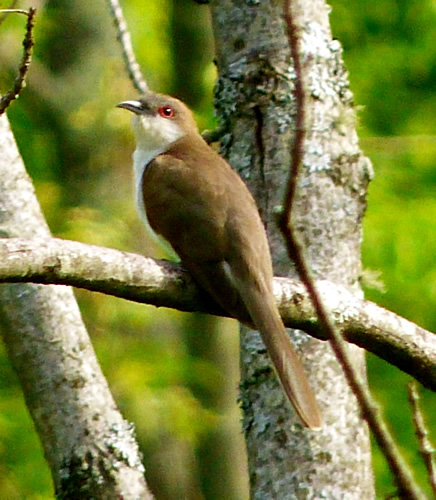
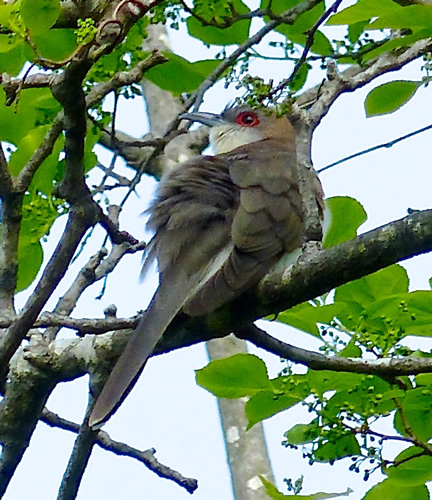
Observer: Paul Lauenstein
Observation Date: 6/14/15
Observation Time: 6:05 p.m.
Observation Location: in the trees between the back soccer field and Gavins Pond
Common Name: Black-billed Cuckoo
Scientific Name: Coccyzus erythropthalmus
Comments: We heard this black-billed cuckoo before we finally spotted it. Even though cuckoos are relatively large birds, they typically don’t move around much, so they are hard to find, unless you know what to listen for.
More Information: All About Birds
Observer: Will Sweet
Observation Date: 2/15/09
Observation Time: 11:00 a.m.
Observation Location: Backyard
Common Name: Black-capped Chickadee
Scientific Name: Poecile atricapillus
Comments: The chickadees were knocking the Pine Siskins off of the thistle feeders.
More Information: Whatbird.com

Observer: Paul Lauenstein
Observation Date: 2/25/20
Observation Time: 12:30 p.m.
Observation Location: Moose Hill Audubon Wildlife Sanctuary
Common Name: Black-capped Chickadee
Scientific Name: Poecile atricapillus
Comments: Chickadees are one of Sharon’s most common birds. They often travel in groups that sometimes include tufted titmouse. With patience, chickadees can be trained to eat sunflower seeds out of your hand!
More Information: All About Birds
Observer: Paul Lauenstein
Observation Date: 4/26/13
Observation Time: 4:30 p.m.
Observation Location: Moose Hill Audubon Wildlife Sanctuary
Common Name: Black-capped Chickadee
Scientific Name: Poecile atricapillus
Comments: Chickadees are one of Sharon’s most common birds. They often travel in groups that sometimes include tufted titmouse. With patience, chickadees can be trained to eat sunflower seeds out of your hand!
More Information: All About Birds
Observer: Will Sweet
Observation Date: 6/4/10
Observation Time: 4:30 p.m.
Observation Location: 4 Gavins Pond Road
Common Name: Black-capped Chickadee
Scientific Name: Poecile atricapillus
Comments: This chickadee family was crowded into a nesting box.
More Information: Whatbird.com
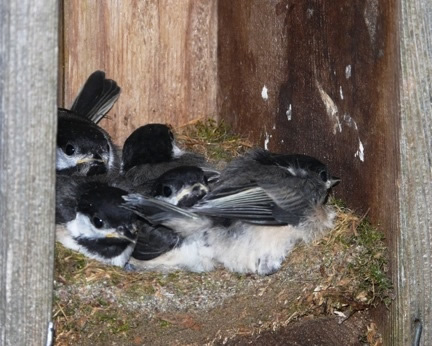
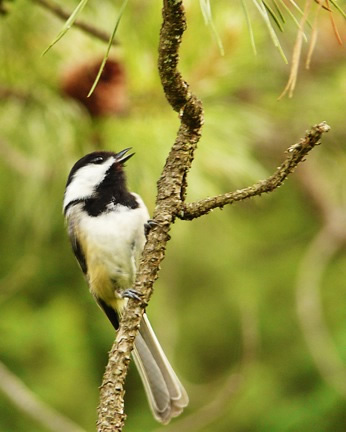
Observer: Paul Lauenstein
Observation Date: 5/11/19
Observation Time: 9:45 a.m.
Observation Location: Moose Hill Audubon Wildlife Sanctuary
Common Name: Black-throated Blue Warbler
Scientific Name: Setophaga caerulescens
Comments: Black-throated blue warblers pass through Sharon in early May on their northward migration. Learn to recognize their buzzy “zree–zree–zreeeee” song to improve your chances of seeing one. Check it out at: https://www.youtube.com/watch?v=lPKuQB1bEqs.
You can monitor the bird migration in spring by keeping an eye on the live radar map at: http://birdcast.info/live-migration-maps/
More Information: All About Birds
Observer: Paul Lauenstein
Observation Date: 5/13/19
Observation Time: 7:45 a.m.
Observation Location: Moose Hill Audubon Wildlife Sanctuary
Common Name: Black-throated Blue Warbler
Scientific Name: Setophaga caerulescens
Comments: Black-throated blue warblers pass through Sharon in early May on their northward migration. Learn to recognize their buzzy “zree–zree–zreeeee” song to improve your chances of seeing one. Check it out at: https://www.youtube.com/watch?v=lPKuQB1bEqs.
You can monitor the bird migration in spring by keeping an eye on the live radar map at: http://birdcast.info/live-migration-maps/
More Information: All About Birds
Observer: Paul Lauenstein
Observation Date: 5/15/23
Observation Time: 7:45 a.m.
Observation Location: Moose Hill Audubon Wildlife Sanctuary
Common Name: Black-throated Blue Warbler
Scientific Name: Setophaga caerulescens
Comments: Black-throated blue warblers pass through Sharon in early May on their northward migration. Learn to recognize their buzzy “zree–zree–zreeeee” song to improve your chances of seeing one. Check it out at: https://www.youtube.com/watch?v=lPKuQB1bEqs.
You can monitor the bird migration in spring by keeping an eye on the live radar map at: http://birdcast.info/live-migration-maps/
More Information: All About Birds
Observer: Paul Lauenstein
Observation Date: 5/13/15
Observation Time: 11:10 a.m.
Observation Location: Moose Hill Audubon Wildlife Sanctuary
Common Name: Black-throated Green Warbler
Scientific Name: Setophaga virens
Comments: The call of this warbler sounds like: “zee-zee-zee-zoo-zee.” It migrates through Sharon in May. I got these photos standing underneath a flowering crabapple tree. The blossoms attracted insects, which in turn attracted insectivorous warblers.
More Information: All About Birds
Observer: Paul Lauenstein
Observation Date: 5/8/23
Observation Time: 7:05 a.m.
Observation Location: Moose Hill Audubon Wildlife Sanctuary
Common Name: Black-throated Green Warbler
Scientific Name: Setophaga virens
Comments: The call of this warbler sounds like: “zee-zee-zee-zoo-zee.” It migrates through Sharon in early May.
More Information: All About Birds
Observer: Faith Berkland
Observation Date: 9/26/17
Observation Location: 302 Mansfield Street Sharon
Common Name: Black throated green warbler
Scientific Name: Setophaga virens
Comments: A nice collection of photos of black-throated green warblers can be found at: The Internet Bird Collection
More Information: All About Birds
Observer: Paul Lauenstein
Observation Date: 5/12/23
Observation Time: 8:00 a.m.
Observation Location: Moose Hill Audubon Wildlife Sanctuary
Common Name: Blackburnian Warbler
Scientific Name: Setophaga fusca
Comments: These gorgeous warblers overwinter in South America. They tend to flit about high in tall trees, making them a challenge to photograph.
More Information: All About Birds
Observer: Paul Lauenstein
Observation Date: 5/15/15
Observation Time: 7:15 a.m.
Observation Location: Moose Hill Audubon Wildlife Sanctuary
Common Name: Blackburnian Warbler
Scientific Name: Setophaga fusca
Comments: This photo does not do justice to these gorgeous warblers, which overwinter in South America. They tend to flit about high in tall trees, making them a challenge to photograph.
More Information: All About Birds
Observer: Paul Lauenstein
Observation Date: 5/18/23
Observation Time: 6::25 a.m.
Observation Location: Moose Hill Audubon Wildlife Sanctuary
Common Name: Blackburnian Warbler
Scientific Name: Setophaga fusca
Comments: These gorgeous warblers overwinter in South America. They tend to flit about high in tall trees, making them a challenge to photograph.
More Information: All About Birds
Observer: Paul Lauenstein
Observation Date: 4/3/14
Observation Time: 2:45 p.m.
Observation Location: Gavins Pond area
Common Name: Blister Beetle
Scientific Name: Tricrania sanguinipennis
Comments: Blister beetles receive their common name from the ability of their hemolymph to produce blistering on contact with human skin. Hemolymph is often exuded copiously by reflexive bleeding when an adult beetle is pressed or rubbed. Blisters commonly occur on the neck and arms, as the result of exposure to adult beetles attracted to outdoor lights at night.
The blistering agent is cantharidin, an odorless terpene (exo-1,2-cis-dimethyl-3,6-ep- oxyhexahydro-phthalic anhydride) occurring elsewhere only in beetles of the family Oedemeridae (Arnett 2008). Cantharidin or cantharides (dried, pulverized bodies of adult beetles) was once employed extensively in human and veterinary medicine, primarily as a vesicant and irritant and is still used in the U.S. as the active ingredient in a proprietary wart remover (Epstein and Epstein 1960, Kartal Durmazlar et al, 2009). Taken internally or absorbed through the skin, cantharidin is highly toxic to mammals. There is an extensive literature dealing with its reputed aphrodisiacal properties and numerous reports of human poisonings, both accidental and deliberate. Source: http://entnemdept.ufl.edu/creatures/urban/medical/blister_beetles.htm
More Information: PBase

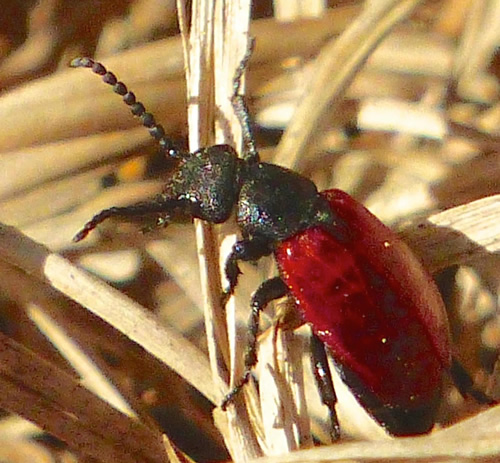
Observer: Paul Lauenstein
Observation Date: 7/19/10
Observation Time: 5:20 a.m.
Observation Location: Gavins Pond soccer field parking lot
Common Name: Blue Dasher dragonfly
Scientific Name: Pachidiplax longipennis
Comments: Female is brown with red eyes and yellow markings. Male is blue with green eyes.
More Information: Wikipedia
Female:
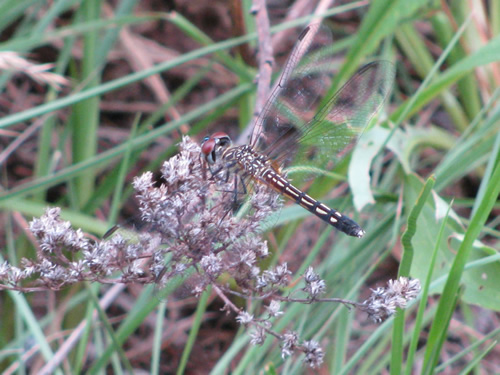
Male:
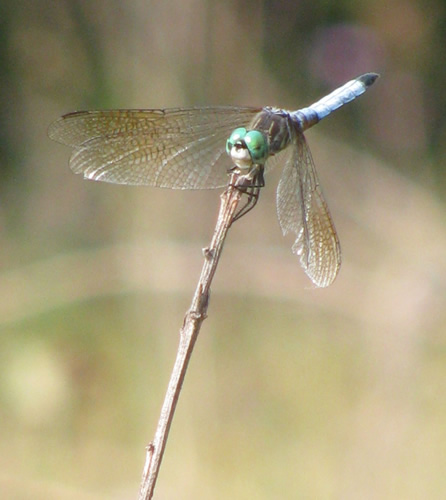
Observer: Paul Lauenstein
Observation Date: 7/15/13
Observation Time: 4:15 p.m.
Observation Location: Gavins Pond area
Common Name: Blue Dasher dragonfly (female)
Scientific Name: Pachidiplax longipennis
Comments: The male has a blue abdomen, hence the name.
More Information: Wikipedia
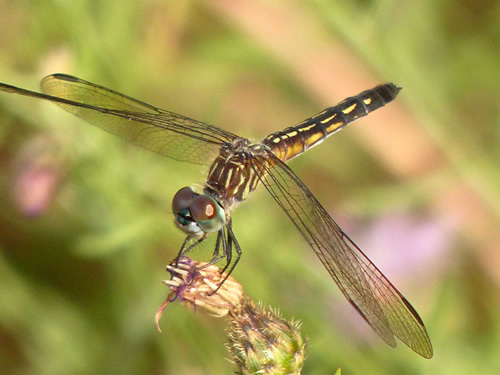
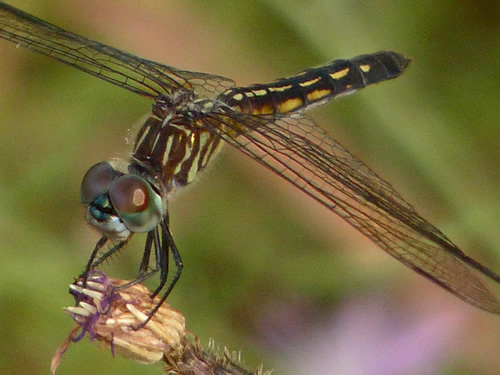
Observer: Paul Lauenstein
Observation Date: 7/8/13
Observation Time: 5:10 p.m.
Observation Location: near Gavins Pond Dam
Common Name: Blue Dasher dragonfly (male)
Scientific Name: Pachidiplax longipennis
More Information: http://www.cirrusimage.com/dragonfly_blue_dasher.htm
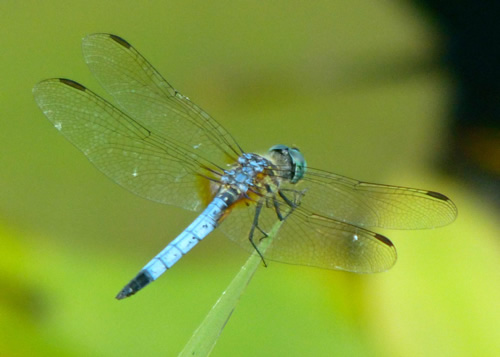
Observer: Paul Lauenstein
Observation Date: 11/19/12
Observation Time: 10:25 a.m.
Observation Location: 4 Gavins Pond Road
Common Name: Blue Jay
Scientific Name: Cyanocitta cristata
Comments: Blue Jays are common in Sharon. They eat insects and nuts. They will also eat the eggs and nestlings of other birds if they get the chance. They can live up to 17 years.
More Information: All About Birds
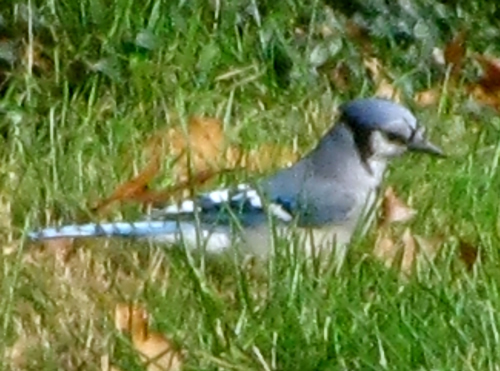
Observer: Paul Lauenstein
Observation Date: 5/11/20
Observation Time: 7:30 a.m.
Observation Location: woods beyond Gavins Pond dam
Common Name: Blue Jay
Scientific Name: Cyanocitta cristata
Comments: Blue Jays are common in Sharon. They eat insects, nuts and seeds. They will also eat the eggs and nestlings of other birds if they get the chance. They can live up to 17 years. Their vocalizations are distinctive and varied.
Blue Jays have an astonishing array of vocalizations. If you learn to recognize them, you won’t be fooled into thinking you are hearing an exotic bird in the woods. Check it out at: https://www.allaboutbirds.org/guide/Blue_Jay/sounds
More Information: All About Birds
Observer: Paul Lauenstein
Observation Date: 5/3/20
Observation Time: 10:35 a.m.
Observation Location: woods near Gavins Pond
Common Name: Blue Jay
Scientific Name: Cyanocitta cristata
Comments: Blue Jays are common in Sharon. They eat insects, nuts and seeds. They will also eat the eggs and nestlings of other birds if they get the chance. They can live up to 17 years. Their vocalizations are distinctive and varied.
Blue Jays have an astonishing array of vocalizations. If you learn to recognize them, you won’t be fooled into thinking you are hearing an exotic bird in the woods. Check it out at: https://www.allaboutbirds.org/guide/Blue_Jay/sounds
More Information: All About Birds
Observer: Paul Lauenstein
Observation Date: 5/5/18
Observation Time: 7:30 a.m.
Observation Location: Moose Hill Audubon Wildlife Sanctuary
Common Name: Blue Jay
Scientific Name: Cyanocitta cristata
Comments: Blue Jays are common in Sharon. They eat insects, nuts and seeds. They will also eat the eggs and nestlings of other birds if they get the chance. They can live up to 17 years. Their vocalizations are distinctive and varied.
More Information: All About Birds
Observer: Paul Lauenstein
Observation Date: 4/26/23
Observation Time: 6:00 am
Observation Location: Moose Hill Audubon Wildlife Sanctuary
Common Name: Blue-gray gnatcatcher
Scientific Name: Polioptila caerulea
Comments: The blue-gray gnatcatcher is the northernmost-occurring species of gnatcatcher, and the only truly migratory one. Most members of its genus are resident in Central and South America.
The nesting range of blue-gray gnatcatchers has been shifting northward since the early twentieth century. Over the last quarter of that century, the shift was about 200 miles, in concert with increasing average temperatures.
More Information: All About Birds
Observer: Paul Lauenstein
Contact Information: lauenstein@comcast.net (781) 784-2986
Observation Date: 5/1/18 at 8:15 a.m.
Observation Location: Moose Hill Audubon Wildlife Sanctuary
Common Name: Blue-gray gnatcatcher
Scientific Name: Polioptila caerulea
Comments: A tiny, long-tailed bird of broadleaf forests and scrublands, the Blue-gray Gnatcatcher makes itself known by its soft but insistent calls and its constant motion. It hops and sidles in dense outer foliage, foraging for insects and spiders. As it moves, this steely blue-gray bird conspicuously flicks its white-edged tail from side to side, scaring up insects and chasing after them. Pairs use spiderweb and lichens to build small, neat nests, which sit on top of branches and look like tree knots.
More Information: All About Birds
Observer: Paul Lauenstein
Observation Date: 5/11/16
Observation Time: 7:45 a.m.
Observation Location: Moose Hill Audubon Wildlife Center
Common Name: Blue-gray gnatcatcher
Scientific Name: Polioptila caerulea
Comments: The blue-gray gnatcatcher is a tiny, long-tailed bird of broadleaf forests and scrublands. It makes itself known by its soft but insistent calls and its constant motion. It hops and sidles in dense outer foliage, foraging for insects and spiders. As it moves, it conspicuously flicks its white-edged tail from side to side, scaring up insects and chasing after them. Pairs use spiderweb and lichens to build small, neat nests, which sit on top of branches and look like tree knots.
Note the tent caterpillars on the branch beside the bird.
More Information: All About Birds
Observer: Paul Lauenstein
Observation Date: 5/5/23
Observation Time: 12:35 pm
Observation Location: Moose Hill Audubon Wildlife Sanctuary
Common Name: Blue-gray gnatcatcher
Scientific Name: Polioptila caerulea
Comments: The blue-gray gnatcatcher is the northernmost-occurring species of gnatcatcher, and the only truly migratory one. Most members of its genus are resident in Central and South America.
The nesting range of blue-gray gnatcatchers has been shifting northward since the early twentieth century. Over the last quarter of that century, the shift was about 200 miles, in concert with increasing average temperatures.
More Information: All About Birds
Observer: Paul Lauenstein
Observation Date: 5/8/19
Observation Time: 9:15 a.m.
Observation Location: Moose Hill Audubon Wildlife Sanctuary
Common Name: Blue-gray gnatcatcher
Scientific Name: Polioptila caerulea
Comments: The blue-gray gnatcatcher is the northernmost-occurring species of gnatcatcher, and the only truly migratory one. Most members of its genus are resident in Central and South America.
The nesting range of blue-gray gnatcatchers has been shifting northward since the early twentieth century. Over the last quarter of that century, the shift was about 200 miles, in concert with increasing average temperatures.
More Information: All About Birds
Observer: Paul Lauenstein
Observation Date: 5/7/19
Observation Time: 8:28 a.m.
Observation Location: Moose Hill Audubon Wildlife Sanctuary
Common Name: Blue-headed Vireo
Scientific Name: Vireo solitarius
Comments: Sorry about the poor picture quality. My challenge to you is to get out there and take a better one! Learn to recognize the song so you will know when you are near one. The best time to find one is in May as they migrate through Sharon on their way north.
More Information: All About Birds
Observer: Paul Lauenstein
Observation Date: 5/7/20
Observation Time: 9:30 a.m.
Observation Location: Conservation land at Lakeview & Morse Streets
Common Name: Blue-headed Vireo
Scientific Name: Vireo solitarius
Comments: The woods were pretty quiet this morning. After walking a long way along a trail, I heard this blue-headed vireo singing high in the treetops. These photos were taken with my new Sony RX-10 iv zoom camera.
Note the bold white “spectacles” around its eyes.
More Information: All About Birds
Observer: Paul Lauenstein
Observation Date: 5/8/23
Observation Time: 7:00 a.m.
Observation Location: Moose Hill Audubon Wildlife Sanctuary
Common Name: Blue-headed Vireo
Scientific Name: Vireo solitarius
Comments: I took this photo of a blue-headed vireo thinking it was a warbler of some kind. When I got home and uploaded my photos to my computer, I discovered it was a vireo, not a warbler.
Note the white “spectacles” around its eyes.
More Information: All About Birds
Observer: Paul Lauenstein
Observation Date: 5/16/20
Observation Time: 7:10 a.m.
Observation Location: near the soccer field parking lot at Gavins Pond
Common Name: Blue-winged warbler
Scientific Name: Vermivora cyanoptera
Comments: The blue-winged warbler’s song sounds like, “bee-buzz.” Note the distinctive mask-like black line through its eyes.
More Information: All About Birds
Observer: Paul Lauenstein
Observation Date: 5/19/14
Observation Time: 11:30 a.m.
Observation Location: Gavins Pond Road
Common Name: Blue-winged Warbler
Scientific Name: Vermivora cyanoptera
Comments: The blue-winged warbler’s song sounds like, “bee-buzz.”
More Information: All About Birds
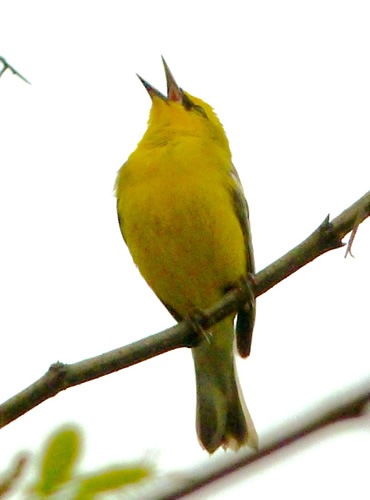
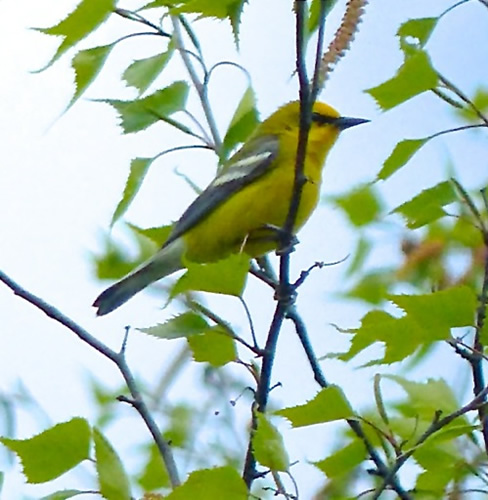
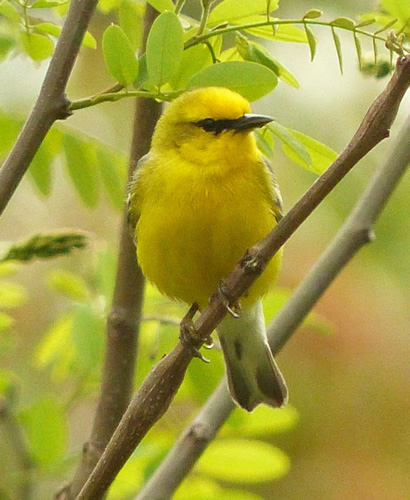
Observer: Jason Platt
Observation Date: 5/8/18
Observation Time: 8:45 a.m.
Observation Location: under power lines at Moose Hill
Common Name: Blue-winged Warbler
Scientific Name: Vermivora cyanoptera
Comments: The blue-winged warbler’s song sounds like, “bee-buzz.”
More Information: All About Birds
Observer: Paul Lauenstein
Observation Date: 5/8/23
Observation Time: 10:30 a.m.
Observation Location: Moose Hill Audubon Wildlife Sanctuary
Common Name: Blue-winged warbler
Scientific Name: Vermivora cyanoptera
Comments: The blue-winged warbler’s song sounds like, “bee-buzz.” Note the distinctive mask-like black line through its eyes.
More Information: All About Birds
Observer: Paul Lauenstein
Observation Date: 6/4/10
Observation Time: 11:45 a.m.
Observation Location: Gavins Pond
Common Name: Bluegill Sunfish
Scientific Name: Lepomis macrochirus
Comments: These sunfish were spawning on a sandy area near the shore.
More Information: Southshore Fishing
